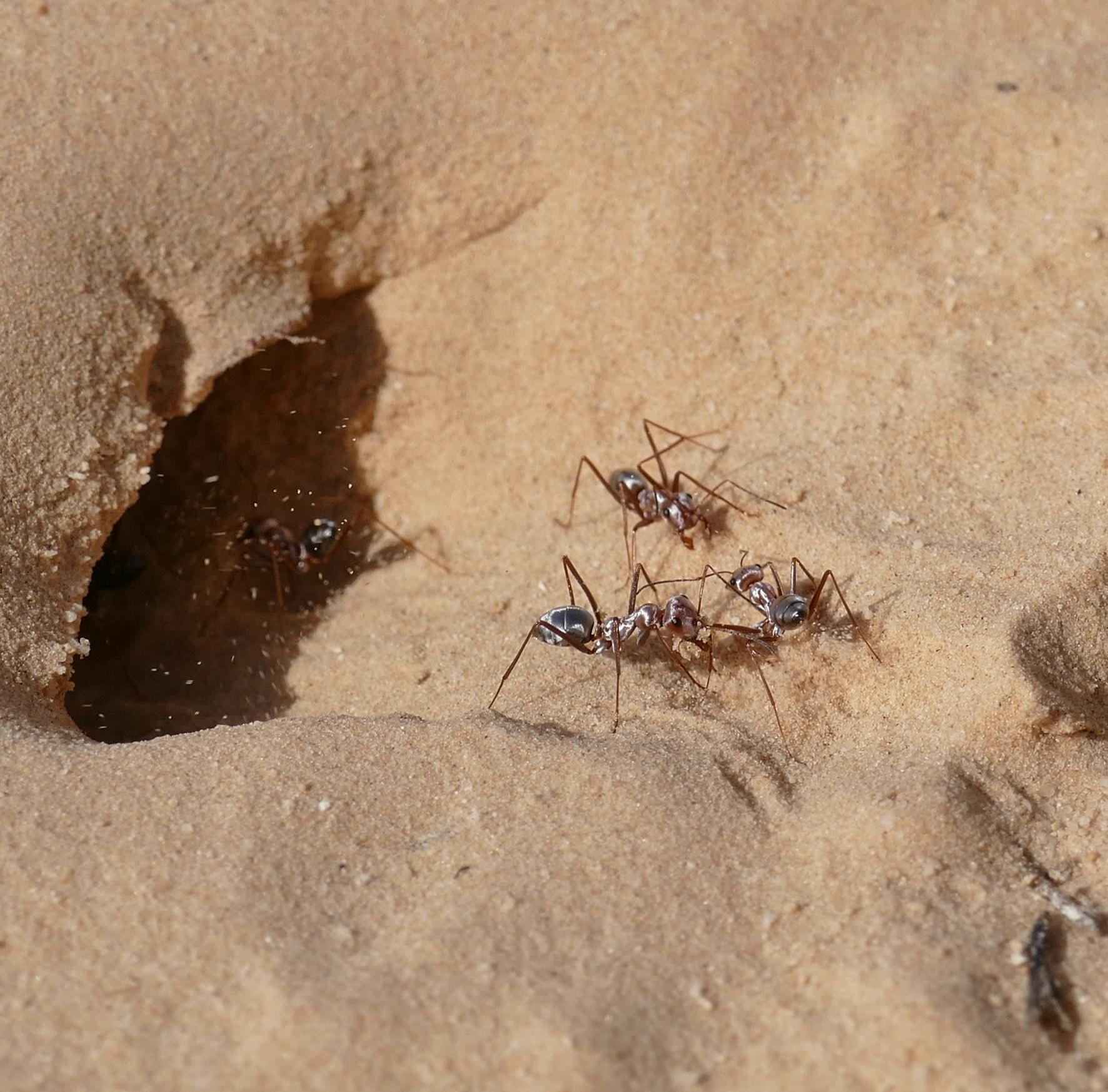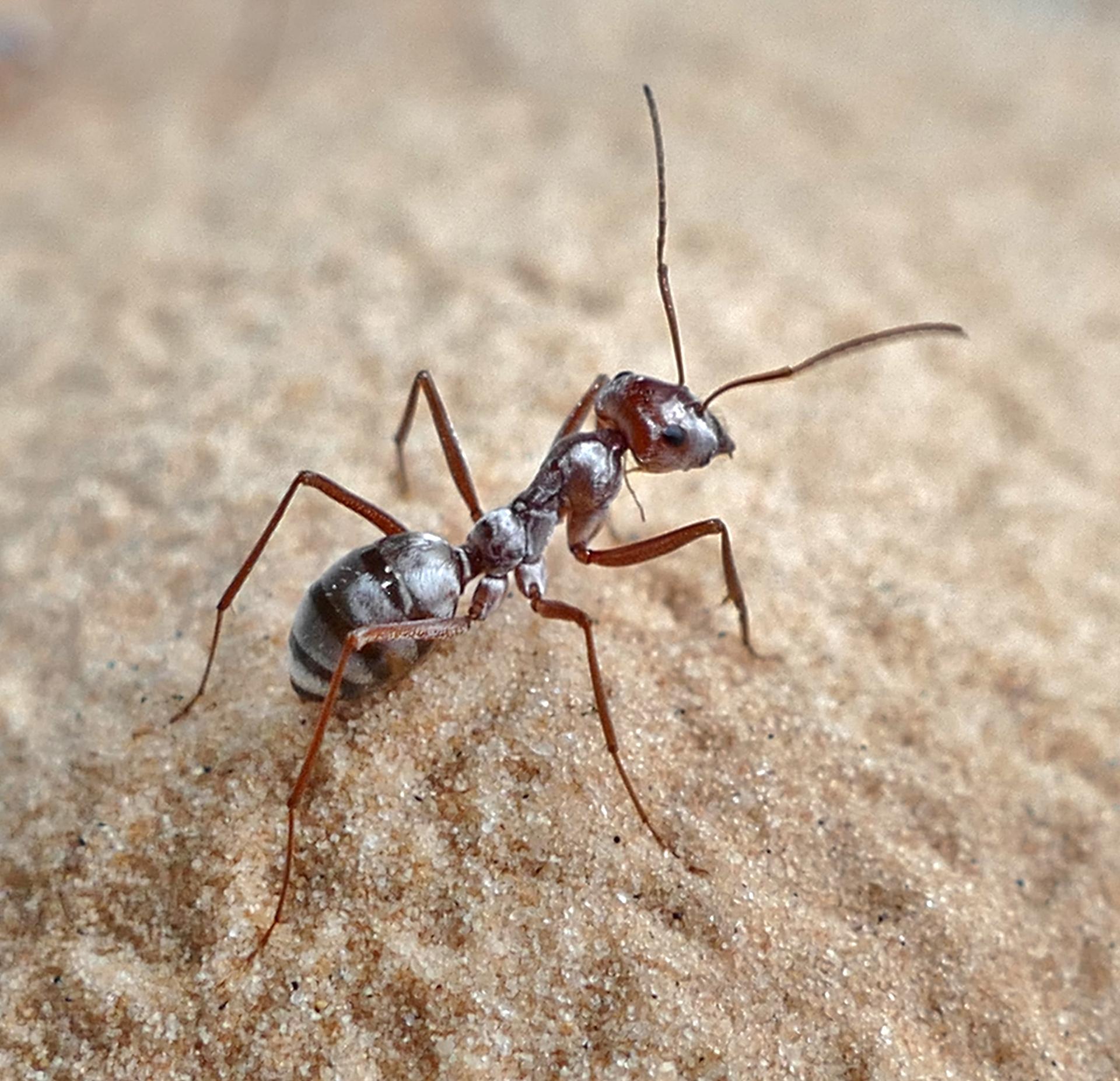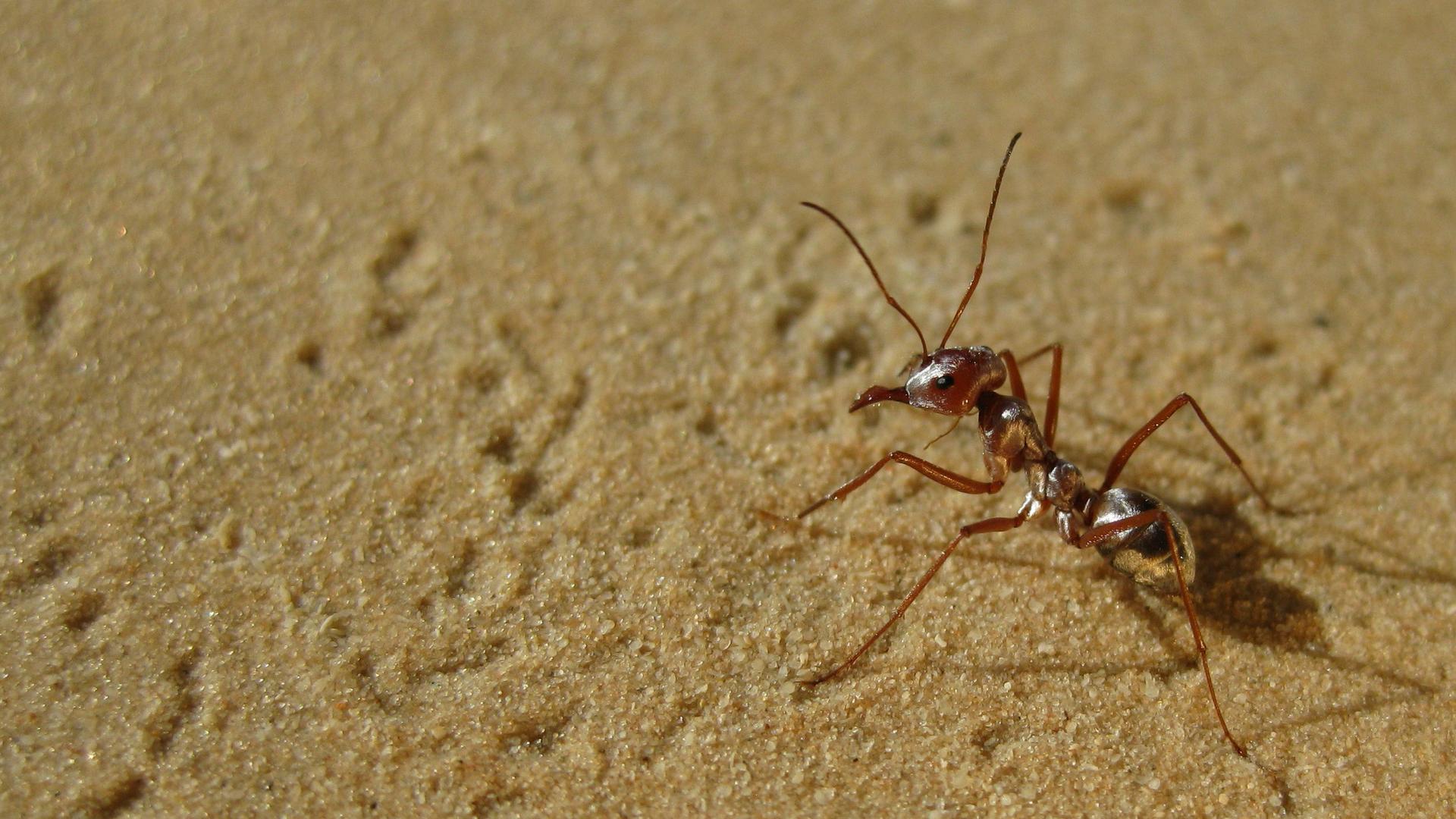The Cataglyphis bombycina is the fastest desert ant on record, pictured here in its sand dune habitat in the deserts of Douz, Tunisia.
You remember Atom Ant? Not Adam Ant, the new wave rocker — Atom Ant, the cartoon character. Atom Ant was fast, but is he as fast as the silver ants of the Sahara?
In the deserts of the northern Sahara, blink and you may miss the fastest ants in the world.
These speedy silver ants “travel 108 times their body length per second and have stride rate 10 times that of Usain Bolt,” according to The Guardian, scampering across scorching sands. These Saharan silver ants, known as Cataglyphis bombycina, in the science world, “emerge from their nests and zip about looking for food — often the carcasses of less fortunate creatures that have succumbed to the brutal temperatures,” writes The Guardian’s science editor, Ian Sample. That works out to about 120 mph.
Related: Is an ‘insect apocalypse’ happening? How would we know?
The World’s host Marco Werman talked with Sarah Pfeffer, who studies animal behavior as a biologist at Ulm University in Germany, about her fieldwork, focused on Saharan silver ants in the deserts of Douz, Tunisia. Her new study about the incredibly fast ants in the Sahara appears in the Journal of Experimental Biology.

Marco Werman: Sarah, how did you come across these Saharan silver ants of North Africa?
Sarah Pfeffer: There has been a lot of research with desert ants and of course, researchers already saw these ants and they know they are fast.
Related: Venomous yellow scorpions are moving into Brazil’s big cities
You timed them. They clocked in at 2.8 feet per second, which is 108 times their body length in a single second. If they’re moving that fast, how do you follow them? How do you monitor their speed?
We used high-speed recording to analyze those runs. Of course, you just can’t take a measuring tape or clock next to your side. So we [installed] some channels on the desert floor.

And so, those channels, that’s like little race tracks for these ants?
Yeah, exactly. You can. It’s a U-shaped aluminum channel and we just installed it in the desert. So it makes the work easy for us.
Related: Brazilian biologist discovers 4 new spider species and names them after heavy metal icons
It sounds like it could be fun, too, just watching ants race. I get that a really small ant moving about a meter per second — that’s really fast. But if I, as a human being, were to run that fast, proportionately speaking, how fast would I be running?
Depends on your size.
I guess I’m like, a meter and seven.
One meter seven? [Multiplied] 108 times your body length. You have to run 180 meters per second. (Editor’s note: This translates to roughly 402 mph.)
Yeah. Well, that’s not going to happen. So, is the speed of the Saharan silver ant about the length of their legs or the speed of their legs — or how many legs they have?
So, they have six legs, three legs in two groups. It’s almost like walking as humans do.

Why do these silver Saharan ants move so fast? Is it about adaptation? And if it is, what are they running from?
They are living in a very hot desert environment. So, to not fall victim to the heat, they need to be very fast. This is one aspect. The second aspect is that they have to go quite long distances. They are living in the desert and there is almost no food around.
What we haven’t said yet is that they are leaving their nest during the midday sun, which sounds crazy to go out in this heat, but there is an advantage [in] that there are not many predators around. So, the predators don’t like the midday sun. They just search for some shadow to cool down. But these desert ants then they are able to go there. And of course, if they are going there, they really need to be fast.
This interview has been condensed and edited for clarity.
